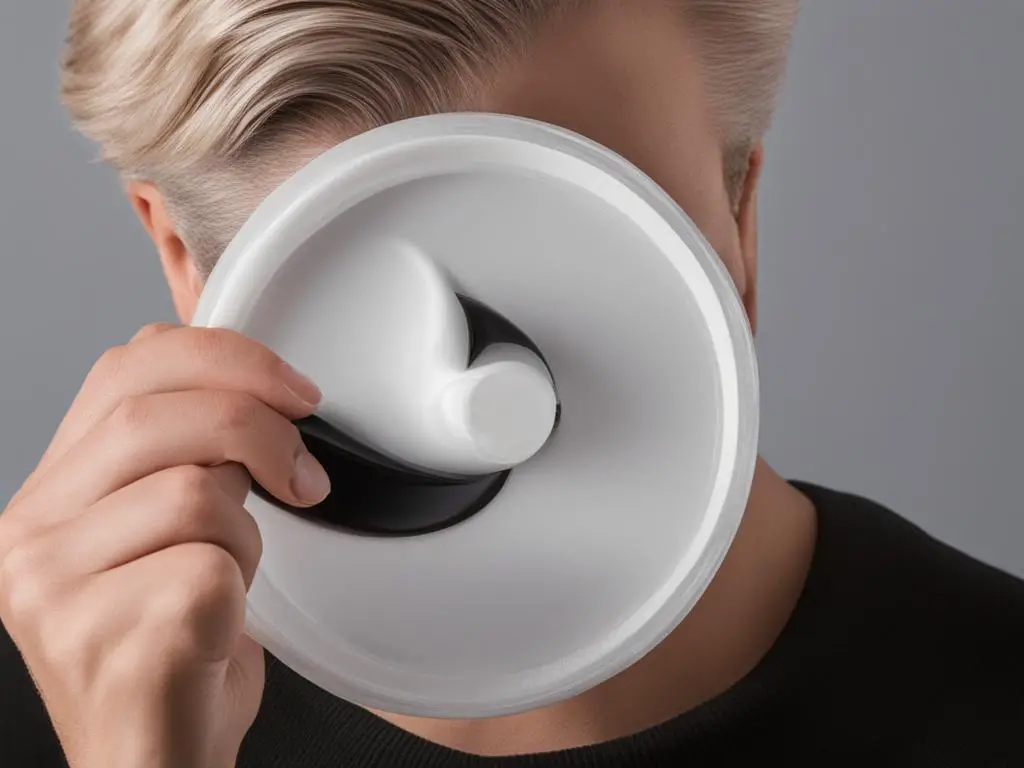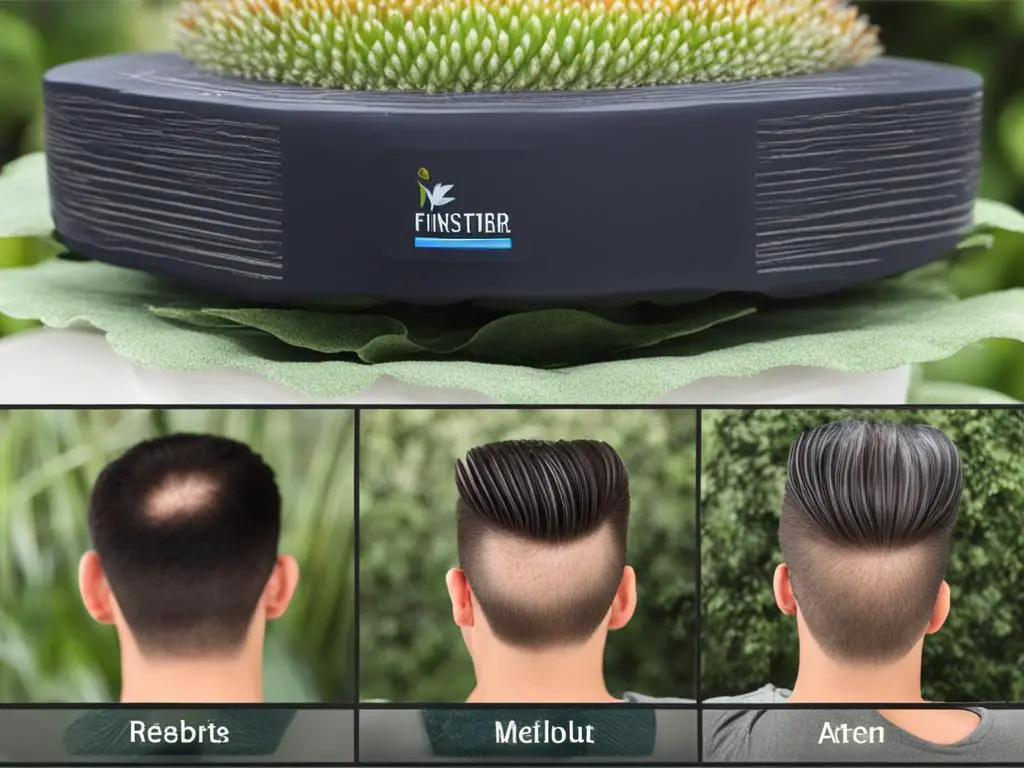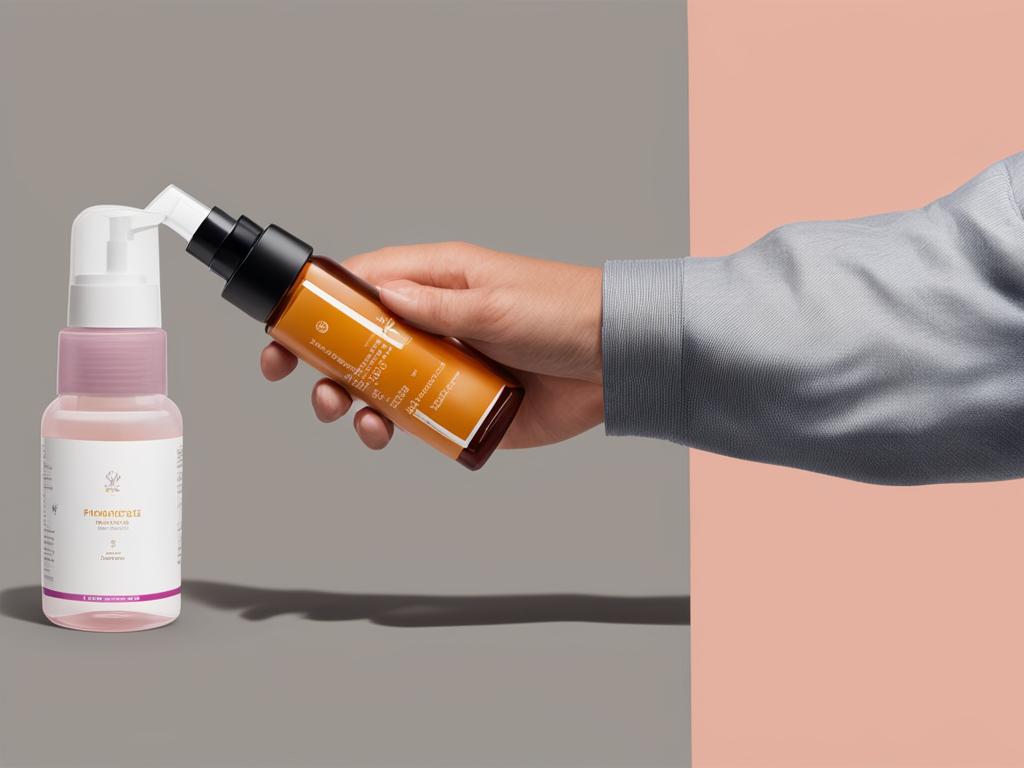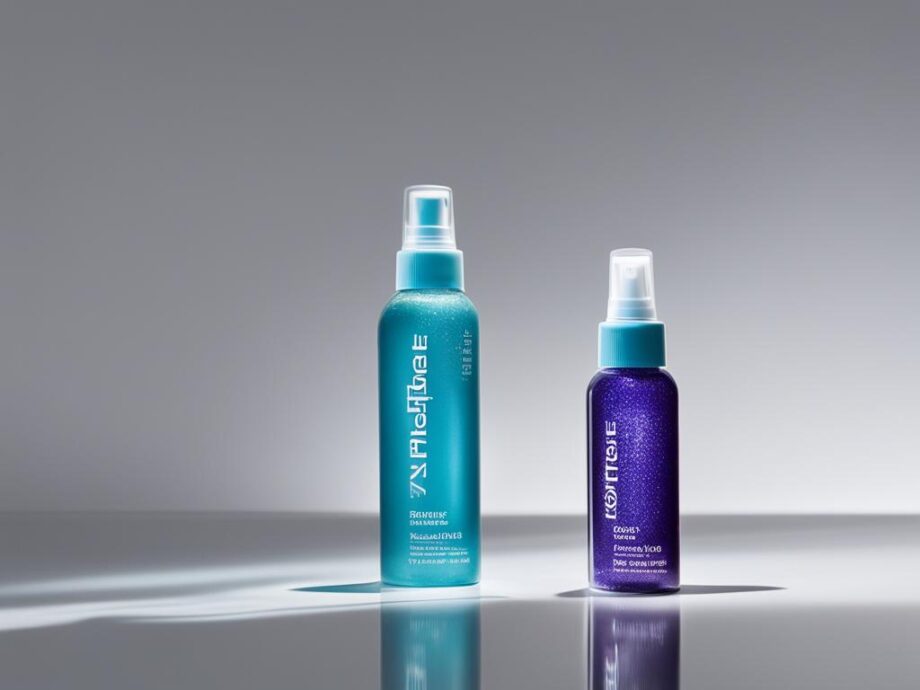If you’re struggling with hair loss and seeking treatment options, you may have come across two popular choices: finasteride gel and spray. Both forms of finasteride provide effective topical solutions for combating hair loss. However, choosing between the two may be overwhelming without adequate information and guidance.
In this article, we will compare finasteride gel and spray to help you make an informed decision about which option is right for you while considering key factors that could affect your treatment outcome.
Key Takeaways:
- Finasteride gel and spray are both effective topical solutions for hair loss.
- The choice between the two depends on factors such as personal preference, application method, convenience, and potential side effects.
- Consult with a healthcare professional to determine which option is best suited to your needs.
- Both forms of finasteride require consistent and regular use for optimal results.
- Potential side effects can occur with both, it is important to discuss with your doctor before starting any treatment.
Understanding Finasteride Gel
Finasteride gel is a topical solution that is used for hair loss treatment. It contains the active ingredient finasteride, which works by inhibiting the production of DHT, a hormone that contributes to hair loss. This topical solution is applied directly to the scalp, allowing for targeted treatment of hair loss.
One of the benefits of using finasteride gel is its ease of application. It can be easily applied with the fingers and doesn’t require any additional tools or devices. This makes it a convenient option for those who prefer a simplified regimen. In addition, finasteride gel is known for its minimal systemic absorption, which means that it is less likely to cause adverse effects compared to oral medications.
There are several finasteride treatment options available, but finasteride gel is a popular choice for those who prefer a topical solution. Its benefits can include reduced risk of systemic adverse effects, easy application, and targeted treatment of hair loss.

Exploring Finasteride Spray
Finasteride spray is a convenient and easy-to-use topical treatment for hair loss. This solution delivers the medication directly to the scalp, providing targeted treatment for hair loss. Unlike gel, which requires using fingers to apply, spray offers a more even distribution of medication across the scalp.
Topical finasteride is a popular form of treatment for hair loss. Both finasteride gel and spray are effective treatment options, but finasteride spray provides several advantages over gel. The lightweight, non-greasy formula is quick and easy to apply, making it the perfect option for those with a busy lifestyle.
Aside from the ease of application, finasteride spray also has minimal systemic absorption, making it a safer option to consider. However, individual results may vary. It is essential to discuss the potential side effects and determine if finasteride spray is suitable for your individual health history with a healthcare professional before use.

Overall, finasteride spray offers several advantages over other topical finasteride treatment options, making it a popular choice. However, individual factors, such as application preference and potential side effects, may influence the decision to use finasteride spray or another form of topical finasteride treatment.
Comparing Application Methods
While there are many similarities between finasteride gel and spray, the application method is a key differentiating factor. Finasteride gel is applied using the fingers, allowing for better control and coverage. The gel can be applied directly to the scalp in the areas requiring treatment. On the other hand, finasteride spray provides a more even distribution of the medication across the scalp, thanks to its spray mechanism.
When deciding which option to choose, consider your personal preference and convenience. Applying finasteride gel using your fingers can be messy and time-consuming. However, some may prefer this application method as it ensures better coverage of the affected areas. On the other hand, finasteride spray can be a more convenient option, thanks to its easy-to-use spray mechanism. It also ensures uniform application and can be less messy overall.

Comparing Application Methods
| Finasteride Gel | Finasteride Spray |
|---|---|
| Applied using fingers for better control and coverage | Applied using spray mechanism for more even distribution |
| Can be more time-consuming and messy to apply | Easy-to-use spray mechanism can make application more convenient |
| Can be preferred for targeted application to specific areas | Ensures uniform application across the scalp |
Effectiveness and Results
Both finasteride gel and spray have been proven effective in treating hair loss. Studies have shown that both forms of topical finasteride can significantly slow down hair loss and promote hair regrowth.
However, it’s important to note that individual results may vary. The effectiveness of finasteride treatment depends on various factors, including the cause of hair loss, the stage of hair loss, and the individual’s response to the medication.
To determine the optimal treatment option for your specific case, it is crucial to consult with a healthcare professional. They can assess your hair loss pattern and overall health to help you select the most suitable finasteride solution for you.
Note: Always follow the treatment regimen prescribed by your healthcare provider to achieve the best possible results.
Potential Side Effects
While finasteride gel and spray are effective in treating hair loss, they come with the risk of potential side effects. It is vital to discuss these effects with your doctor and consider your personal health history before beginning any treatment.
Some of the known side effects of finasteride gel and spray include:
| Side Effect | % of Patients |
|---|---|
| Reduced libido | 1.8% |
| Erectile dysfunction | 1.3% |
| Breast tenderness/swelling | 0.5% |
These side effects are generally mild and resolve once treatment is stopped. However, if you experience any persistent or severe side effects, contact your doctor immediately.
Factors to Consider
Choosing between finasteride gel and spray can seem overwhelming, but considering a few key factors can help you make an informed decision that aligns with your needs and lifestyle.
Personal Preferences
Everyone has different preferences when it comes to applying medication. Finasteride gel is applied with the fingers, while spray is applied using a nozzle. Consider which application method is more comfortable and convenient for you.
Application Method
Application method can also impact the effectiveness of the medication. Gel allows for better control and coverage, while spray provides a more even distribution of the medication across the scalp. Choose the option that best suits your hair loss needs and preferences.
Convenience
For those with a busy schedule, convenience is essential. Finasteride spray offers a quick and easy application process, making it a popular choice for many. On the other hand, gel requires a bit more time and effort to apply. Choose the option that fits naturally into your routine.
Potential Side Effects
As with any medication, finasteride gel and spray carry the risk of side effects. Reduced libido, erectile dysfunction, and breast tenderness are some of the potential side effects. It is crucial to discuss the risks with your healthcare provider and consider your personal health history before starting any treatment.
Ultimately, the decision between finasteride gel and spray comes down to your individual needs and preferences. By carefully weighing the above factors, you can confidently choose the finasteride solution that is the best fit for you and your hair loss journey.
Conclusion
Choosing between finasteride gel vs spray can be a difficult decision for those seeking an effective hair loss treatment solution. Both options offer targeted treatment for hair loss and have their own unique benefits and drawbacks.
To make the right choice, consider factors such as personal preference, convenience, and potential side effects. Regular and consistent use of either finasteride gel or spray is crucial to achieving the best results in your hair loss treatment journey.
Discuss your options with a healthcare professional to determine which option is best suited to your needs and lifestyle. Whether you choose finasteride gel or spray, both can provide effective outcomes in the fight against hair loss. By comparing finasteride gel and spray, you can make an informed choice and take the first step towards regaining your confidence and improving your overall quality of life.
So, if you are experiencing hair loss and considering finasteride for hair loss treatment, compare the differences between finasteride gel vs spray and make a decision that’s right for you.
Start your journey towards healthier-looking hair with the right finasteride solution. Keep in mind that each individual’s hair loss case is unique and requires personalized attention. Don’t hesitate to reach out to a healthcare professional to find the best treatment solution for you.
Comparing finasteride gel and spray will help you make an informed decision to stimulate hair growth. Now you know more about the differences, which option are you leaning towards?
FAQ
What is finasteride gel?
Finasteride gel is a topical solution for hair loss treatment that contains the active ingredient finasteride. It is applied directly to the scalp, allowing for targeted treatment.
How does finasteride gel work?
Finasteride gel works by inhibiting the enzyme that converts testosterone to dihydrotestosterone (DHT), a hormone that contributes to hair loss. By blocking DHT production, finasteride gel helps to prevent further hair loss and promote hair regrowth.
What is finasteride spray?
Finasteride spray is another topical solution that delivers the medication directly to the scalp. It offers targeted treatment for hair loss and is known for its convenience and ease of use.
How do I apply finasteride gel?
Finasteride gel is typically applied to the scalp using clean fingers. It is important to follow the instructions provided by your healthcare professional or the product packaging for the correct application technique.
How do I use finasteride spray?
Finasteride spray is applied by spraying the medication directly onto the scalp. It is important to follow the instructions provided by your healthcare professional or the product packaging for the correct application technique.
Which is better, finasteride gel or spray?
The choice between finasteride gel and spray depends on personal preference, application method, and convenience. Both options have been shown to be effective in treating hair loss, so it is important to discuss with your healthcare professional to determine which one is best suited to your needs.
Are there any side effects of using finasteride gel or spray?
Like any medication, finasteride gel and spray carry the risk of side effects. Some potential side effects may include reduced libido, erectile dysfunction, and breast tenderness. It is important to discuss the potential side effects with your doctor and weigh the benefits against the risks before starting any treatment.
Can finasteride gel or spray be used by women?
Finasteride gel and spray are typically not recommended for use by women, especially those who are pregnant or planning pregnancy, as they can potentially cause harm to the unborn baby. It is important to consult with your healthcare professional to determine the most appropriate treatment option for your specific situation.
How long does it take to see results with finasteride gel or spray?
The time it takes to see results with finasteride gel or spray can vary for each individual. It is important to be patient and consistent with the treatment, as it may take several months before noticeable improvement in hair growth is seen.
Can I use finasteride gel or spray with other hair loss treatments?
It is important to consult with your healthcare professional before combining finasteride gel or spray with other hair loss treatments. They will be able to provide guidance on the most effective and safe combination of treatments for your specific case.
